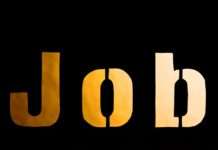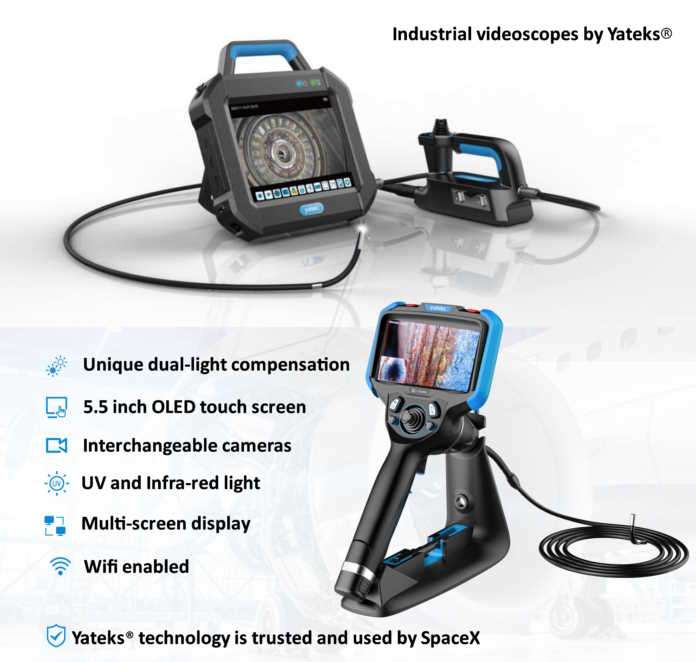03 June 2024: A borescope is an optical instrument with a camera mounted on a flexible probe. It consists of a camera, insertion tube, base unit and display screen. Borescopes are used to examine narrow, hard-to-reach areas not easily visible to determine the structural integrity of machinery and equipment. It allows for timeous identification of hidden issues in closed or tubular areas so they can be addressed before exacerbating into more significant problems.
Yateks®, a global leader in the manufacture of high-quality borescopes, achieved a milestone breakthrough in October 2021 by being selected by authoritative American magazines as one of ten companies at the forefront of providing Non-Destructive Testing (NDT) solutions impacting the industry. “In the wake of this recognition, we have partnered with Yateks® to bring affordable yet advanced inspection solutions to the wider African market,” says ISO-Reliability Partners CEO Craig FitzGerald.
Borescopes have extensive commercial and industrial applications as they are widely used in numerous industries, including automotive, aviation, manufacturing, power generation, mining and more. Borescopes come in different types, ranging from non-articulating to articulating borescopes, from flexible to rigid videoscopes. Each type is suitable for specific inspection requirements.
A borescope can consist of rigid or flexible working length insertion tubes, a light source to illuminate the target under inspection, and a still image or video camera for image taking, record keeping, and analysis. Advances in optical technology and modern electronics have resulted in considerable advancements in the borescope industry.
Borescopes are used to non-destructively inspect industrial systems and equipment for condition, internal wear, corrosion, foreign particle detection, to inspect manufactured parts for quality, and they are used by security and law enforcement for contraband detection, intelligence, and safety.
Common inspections include internal viewing of turbine engines, combustion engines, pipes, heat exchanger tubes, gearboxes, bearings, pumps, welding, foreign object retrieval, and inspection of cast, manufactured, or machined parts.
Borescope probes are available in a variety of lengths and diameters. This choice is restricted by component openings, pipes, and vents in the machinery being inspected. Purchasing an inspection borescope with several probe sizes may be advantageous to avoid the need for multiple tools for similar work.
Rigid borescopes typically have smaller diameters for inspection of very small components and spaces. They have a simple design, are easy to use and offer high-resolution images of small parts and straight pipes. However, due to their lack of motion, and with viewing limited to a straight line, they are not ideal for applications requiring the inspection of irregular internal cavities.
Flexible borescopes enable the inspection camera to be moved at different angles and directions, ideal for curved pipes, ducts and vents. The high mobility offered by flexible borescopes overcomes space limitations and steep angles. Capable of covering both small and large areas, they can perform inspections in a variety of environments with depth and accuracy.
The direction of view (DOV) describes a device’s view from the longitudinal axis through the scope’s tube. Specified in degrees, it can be fixed or variable, and potentially adapted by using an interchangeable tip adapter.
Borescopes with 90° viewing angles are ideal for inspecting piping and narrow spaces in great detail. However, other applications may require borescopes with broader viewing angles for more comprehensive inspections.
The field of view (FOV) is the cone of vision that extends from the probe tip. As the field of view widens, more surface area can be seen. However, with a wider field of view, detail typically reduces, becoming less capable of magnification. As the inspected object’s distance from the scope increases, the FOV angle should decrease, improving magnification and image quality.
Used in typically inaccessible areas, inspection cameras must be chosen in relation to their intended testing environment. This includes factors like ambient lighting and vibration. For plumbing, cameras need to be waterproof while those used in engineering applications may need to withstand exposure to heat or chemicals.
Sometimes it may be necessary to record images and videos from a visual inspection. If this is the case, purchasing a borescope with a removable SD memory card to download these images easily is useful. More advanced borescopes may also be able to run additional analytical software. This capability comes with an increase in cost, so it is worth considering whether it is essential or not.
Inspection cameras require a light source to illuminate the piping or cavity being examined. The choice of light source is contingent on the intended application. General borescopes often use distal LEDs, whose light source can meet many ordinary applications. Fibre illumination might be preferable for sensitive applications when internal spaces are large and very dark. Either has its own advantages and disadvantages. Users can choose based on their actual needs.
The range of Yateks® industrial borescopes is application specific. A wide range of accessories is available, which should be the main deciding factors for tool suitability. As camera inspection devices can be quite costly, enhancing a device so that it can be used for multiple applications is cost-effective. This can be achieved by using compatible accessories such as longer camera probes, extension poles, anchoring magnets, hooks or mirrors to maximise efficiency by lengthening the device, retrieving metal items, and seeing around corners.
Inspection cameras should be well designed, comfortable to use, and ergonomic so that they can be operated with one hand whilst the other is free to guide and control the probe effectively. Controls should also be within easy reach of the fingers and thumb, so as not to let go of the camera in order to take a photo, which could make it move and affect the image taken.
Borescope inspections can play a pivotal part in keeping expensive machinery safe and to maximise its useful life. It is difficult to imagine an industrial process or piece of equipment that does not have bearings or a gearbox. These are workhorse components that for the most part go unnoticed, performing their intended function day after day, week after week – until they reach their breaking point, and the entire process or machine comes to a grinding halt.
By incorporating a Yateks® borescope into your regular maintenance protocol, you can catch problem gears or bearing surfaces before they fail. Almost every gearbox has an access port that can accommodate the ultra-thin insertion tube diameter, as small as 2.2mm diameter. Once through the access port, use the joystick camera controller to steer and point the camera at exactly the right area to inspect the gear teeth, races, and bearings.
With built-in image capture and video recording capability, users can document the condition of problem areas over time and make the rebuild/replace decision before a catastrophic failure. And you will be able to do all this without costly and time-consuming disassembly.
Not having a video borescope for internal inspections would lead to more prevalent disassembly of machines. These costs include not only the man hours that employees must set aside to disassemble and reassemble machinery, but also the income forfeited during the time the machine is not working. With a high-quality borescope, companies can perform preventative maintenance to foresee corrosion and internal wear and act accordingly.
With an articulating inspection camera, maintenance professionals can get a detailed look at internal parts of machinery. Remote visual inspection (RVI) allows quality experts to see if any corrosion or faults are beginning to form ahead of time; giving companies enough time to order the parts that are needed from suppliers. When the parts arrive, machines can be quickly shut down, disassembled, have the necessary parts replaced, and reassembled in a much shorter time frame.
Without the forecasting that a high-quality videoscope can provide, the alternative is days or weeks of downtime, high costs of expedited shipping, and lost production. A high-quality video borescope allows technicians to present inspection results with confidence by giving them the ability to provide hi-resolution photographic evidence of the internal state of the machine being inspected. Certain quality checks even require photographic proof to pass inspection tests, making an articulating borescope with image and video capture essential. Customers such as Lufthansa and SpaceX utilise and trust Yateks borescope technologies, elaborates FitzGerald.
About ISO-Reliability Partners
ISO-Reliability Partners has consolidated knowledge and expertise and provides industry with substantial and quantifiable improvements to plant and asset protection. We combine expertise in the fields of filtration, lubrication, and tribology, offering an advanced and comprehensive service to our customers.
The well-being of the environment is of key concern but is often overshadowed by business needs. Through the more efficient use and handling of commodities such as fuel and lubricants, we reduce pollution through lower usage and disposal of lubricants, conserve electricity usage while achieving higher production output and provide greater asset protection and an overall lowest cost of ownership.
ISO-Reliability Partners is a Level 2 accredited B-BBEE contributor that owns the iconic Filter Focus brand and provides lubrication products and services with a foundation in tribology and hydrocarbon ISO cleanliness. Unlock the hidden and lost value in your business operations with world-class technology provided by ISO-Reliability Partners, your partner in improved efficiencies.
ISO-Reliability Partners Contact
Craig FitzGerald
Phone: +27 10 449 6414
Email: [email protected]
Website: www.iso-reliability.com
Media Contact
Andile Mbethe
Account Executive
NGAGE Public Relations
Phone: (011) 867-7763
Cell: 073 565 6536
Email: [email protected]
Web: www.ngage.co.za
Browse the NGAGE Media Zone for more client news articles and photographs at http://media.ngage.co.za











